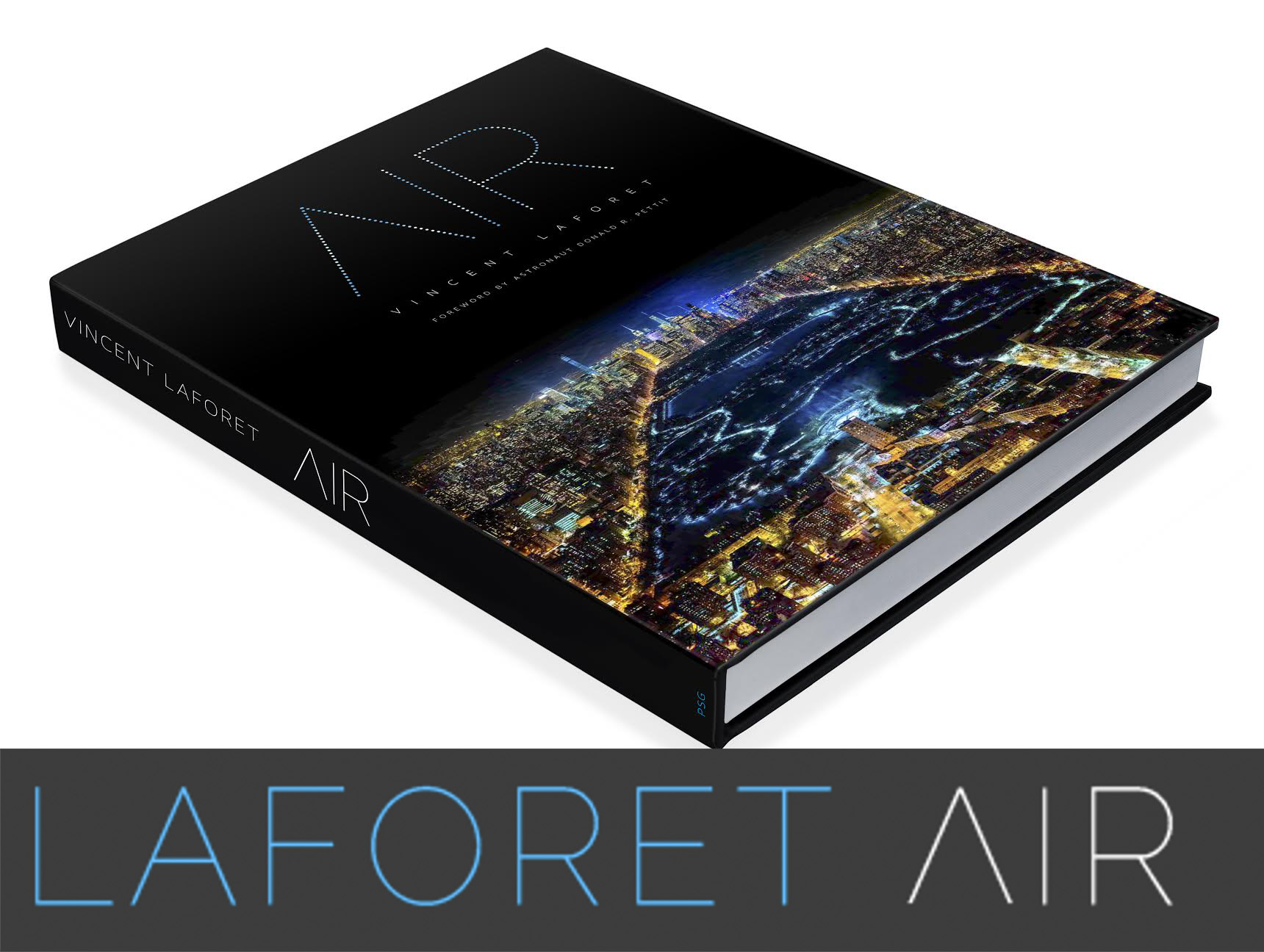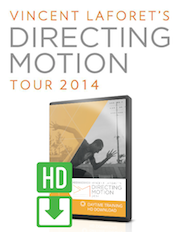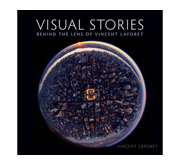Workflow: Adobe Premiere Intro and FCP 7 roundtrip
I’ve been a Final Cut Pro user for more than 6 years, well before I started to shoot video (I used it for photo slide shows when I was at The New York Times.) I started to test out the waters with Adobe’s CS5.5 Production Suite a few months ago as it supported HDSLR footage natively (Adobe’s Mercury engine doesn’t need to convert the footage in order to edit it, and that can speed things up significantly during an edit or when you’re on deadline.) I also needed to familiarize myself with software that others could use on both a Mac and PC (which CS 5.5 does – in fact you can transfer your projects back and forth seemlessly between both platforms on the same HD/USB stick in case you were curious.)
Recently, I’ve gotten more deeply involved with CS5.5 when I found myself needing an editor that could handle RED’s Epic 5K footage nativelly and take full advantage of both the camera’s raw format and resolution (notably with tools such as After Effects’ Warp Stabilizer.)
One big surprise along the way was to find out how how easy it is to go back and forth rather effortlessly between Premiere and Final Cut 7 (or "round trip") through XML. (Important note: this works with FCP Studio and FCP 7 – not with FCP X as of today.) No matter how much I love CS 5.5’s capabilities – I’m still a a huge fan of Final Cut Studio’s "Color" software. And no matter who you are – I think it’s fair to say no one likes to feel "locked in" to any application (or locked out of another…) at first. Thanks to the XML exchange format, I am able to use both tools hand in hand and not be forced to decide on either one exclusively. Any editor worth their salt out there will tell you that Avid, FCP, Premiere, Motion, After Effects etc. all have very unique capabilities – and it never hurts to broaden your skill set with multiple tools.
Therefore I thought I’d put a quick little video up on the blog showing how you can roundtrip back and forth between both apps via XML. If you have an FCP 7 project and want to use Premiere or After Effects – you can do so in seconds. If you then want to send that project back to FCP 7 and grade it in Color for example – again, you can do so with a few keystrokes via XML. I didn’t know this until a few months ago, and I also wasn’t aware of how similar both editors are to one another. Doing a basic with either tool is extremely similar in fact – Premiere even comes with both FCP and AVID keystroke sets to make those going back and forth more "at home." The video below serves as a quick intro to Premiere as well.
The most fun for me to date has definitely been working with After Effects – one of the most powerful compositing pieces of software out there… but that’s for another time. So here’s the quick video that tries to demonstrate this (it’s pretty basic, and a little rough – but does the job I think) GO TO THE 5:40 mark in the timeline to go straight to the "roundtrip" section:
Adobe Premiere CS5.5 & FCP 7 – Intro & Roundtrip from Vincent Laforet on Vimeo.
There’s been a lot of hubbub in the past few days about Apple’s release of Final Cut Pro X. Some people love it – others, well, not so much. I think a lot of that depends on what type of user you are of course – many higher end post houses won’t find the features they need just now, while many other less demanding users may be very happy with the new set of features it does offer. I have always respected Apple’s desire to innovate – and to try different things. No one liked the idea of the phone without a keyboard at first… and well… the rest is kind of history isn’t it? Innovation or evolution is a messy process. Often that means ripping everything up and building up from scratch – which is something that Final Cut Pro’s old architecture was definitely in need of, given the advances in 64 bit architecture over the past few years. So obviously Final Cut Pro X doesn’t yet have all of the features from the previous version at this time. If there’s one thing I’ve learned: never count Apple out of any race. That being said, I need a solution for my production needs immediately and I’ve been very happy with my experience with not only Premiere but also the entire CS 5.5 Suite.
As many of you know, I started shooting with the Epic a little over a month ago, and FCP 7 and FCP X don’t yet support the camera (although I hear that Apple is working on a plugin according to David Pogue’s blog post today.) Premiere and After Effects do support the camera natively and that’s been an awesome solution for me. I should make no secret of the fact that I have been giving feedback to Adobe’s CS5.5 team on how to improve the Epic’s 5K workflow which can be a daunting task given how massive the raw files tend to be.
Premiere has proven itself to be a great "go to" solution at this point – and its intergration with After Effects and Photoshop is really incredibly powerful. Adobe Media Encoder is also one of the best output solutions for your video out there across almost any platform – it’s blazing fast. I haven’t had a chance to test out Apple’s new Compressor yet to compare the two.
So if you’re curious about Premiere or "round tripping" – check the video out above. I should note that I’ve begun using Magic Bullet’s Suite 10 and notably "Colorista II" for my color correction/grading needs within both Premiere and After Effects – and I’m pretty proud of what my buddy Stu Maschwitz has done with it… pretty impressive my friend! "I liiikkke" This is definitely an extremely viable solution for those who want to do color correction and much more within the CS5.5 suite (and the plugins work in FCP 7 and Motion as well – but not FCP X or the new Motion at this time.) I would recommend you own the Magic Bullet Suite regardless of what other tools you have – given some pretty cool features that I’ll cover as soon as I find the time.
A big thanks to Richard Harrington for his help on this and another upcoming tutorial on CS5.5 and After Effects – you can check out his blog and more of his work here.
One important note: you’ll notice that I’ve pulled FCP Studio’s link off of the software section of the "My Gear" section of this blog – and that I haven’t linked any of the Final Cut Studio’s software on this page – that is simply due to the fact that Apple has pulled it off of their store and recalled the FCP Studio software from retailers as well, which I do find unfortunate. While I see that Apple is moving towards having all of their software sold through their App Store (and not "boxes on shelves") I do think a lot of users out there would continue to purchase the FCP suite as FCP X matures as a product.













Good ressource, thanks. I’m currently leaving FCP for Premiere, so this will be usefull. (I can’t stand no more the transcoding time)
Apple Color is the software that I will the most miss.
Do you have any experience with working with Premiere, H264 canon files and color correcting them in Davinci Resolve?
I don’t really like to work with plugin like Magic Bullet to do the color grading, I like better to have a dedicated app to do the color grading work.
Vincent Laforet Reply:
June 24th, 2011 at 3:54 am
I’m awaiting my copy of Resolve actually… think it’s going to be a fantastic option. Told it works perfectly except for a minor bug w/ Timecode that is being addressed….
Nice to know now that Apple has decided to shake things up. Does Premiere import older FCP file versions as smoothly? And does it have a sister program like Compressor to convert the delivery files into different formats? Thanks!
Vincent Laforet Reply:
June 24th, 2011 at 10:31 am
Yes and Yes – their export program is called Adobe Media Encoder – and it could just be the best such program on the market… hands down
Vincent, I enjoyed reading your thoughts on Apple and Final Cut ProX. It seems like every post I read on twitter is so black and white. You are the only one who is acting like an adult. You see the long range advantage to what the new software might become. Myself I’m in an awkward position I’m just getting into DSLR film making and neither the new FInal Cut nor Premiere Pro seem compatible with my 2007 imac. At this point in this economy I just can’t afford a new computer. I guess I’m just stuck with imovie 11.
@Vincent Laforet, thanks for the reply. Glad to hear that.
Resolve looks like a great app!
Great post!
Many blogs go for the “keep it short and fun” approach, but I really appreciate the amount of detail and effort taken to deliver knowledge and practical application to the reader.
many thanks!
Vincent Laforet Reply:
June 25th, 2011 at 11:02 am
Appreciate it!
Vince – thanks for this article and your continued sharing with the community.
Apple has a real mess on it’s hands with FCP X. There has been an exodus to CS 5 from FCP users and FCP X was Apple’s answer to that?
The have made a situation for frustrated FCP 7 users actually have an easier time learning (and using) CS 5.5 than learning FCP X! The interface might be a little different, but the concept is the same. Sort of like being able to drive a new rental car at the airport – you get in, the controls are located in different spots, but the concept is the same – adjust mirrors, find controls and drive as usual.
I have used FCP since version 1.0. FCP X has a LONG way to mature as a professional product – but by that time most people will be invested in Adobe’s professional and constantly evolving video editing product line.
It’s been a very sad week for Apple.
Great video, thanks.. 🙂 I wish we could have watched the section on getting in and out of After Effects. I’ve used FCP for years and hence also Motion. Moving to Adobe CS wouldn’t mean I’d abandon Motion, but I’d want to learn and use AE more and more I’m guessing, particularly if you really can go in and out of it easily..
The speed in Premiere is impressive! But I’m wondering if this was captured using some insanely specced Mac Pro, and external RAID? Do you still get okay real time performance on a Macbook Pro using the internal drive in your experience?
quico Reply:
June 29th, 2011 at 10:06 pm
As far as getting to After Effects, you just go to Import–Adobe premiere pro project and then you can select your sequence. Everything is layed out in After Effects just like the edit. Ive actually been using Premiere as a conform tool to get from Final Cut and Avid to After Effects.
Great post vincent! I’ve been trying Premiere CS 5.5 these days..and it’s really fantastic! Easy and powerful! I’m using Colorista II for my grading too…I love having the same FC quality without the slooow 5DtoRGB conversion..
Vincent what H.264 free codec do you use for the best quality in vimeo? Thanks!
Greetings from Italy!
Luigi
http://teamcoco.com/video/conan-editors-love-final-cut
I love the new FCP as much as Conans editors do.
Great post thanks!
So is the only way to get a FCP clip or sequence into After Effects (to use the Warp Stabilizer for example) to go through Premier?
Hi Vincent,
You really should try EDIUS. The latest version handles RED files and it ALWAYS handled raw files from DSLRs – including Multicam! 3-4 vews without stuttering [important for Films & Concerts]. I’ve used it with NUENDO [audio], AE [Visual effects], for years. It was the first editor to work natively with HDV in 2004! FCP [which I also use] didn’t get it together for a long time. I use Bootcamp on my MACs and can also work easily between programs.
rgds
Kostas
Hi Vincent,
I just did a shootout on my MacbookPro. Very simple. Dropped a Canon 5dmk2 Mov file into each of the programs and ABd between programs to see “how” each of the monitor screens reproduced the image [important, since this is the raw look before colourising etc]. The difference was quite dramatic. I’m using Win 7 64bit on Bootcamp. You can download the free EDIUS and try it for yourself. EDIUS has much more detail in the blacks. Colors are handled more naturally.
rgds
Kostas
Vincent Laforet Reply:
July 6th, 2011 at 8:34 am
Appreciate it! I was recently let down by Technicolor on a grey/overcast day. The color was incredibly muted and when you brought it back up the skin tones went crazy. Technicolor is a great tool but you need to be careful with it… v
@Vincent Laforet, I’m told that while it is much faster than Compressor, the quality of the compressed files is not as good. I have not done the research myself, just something to look out for/take into account.
Vincent Laforet Reply:
July 12th, 2011 at 12:49 am
Haven’t seen that on my end.
do you use redcine-X or dump your RED epic files striaght into premiere?
Vincent Laforet Reply:
July 29th, 2011 at 9:54 am
Have done both… depends on the speed of your machine and the cut as well.
How much of this can be done on premiere pro 5 instead of 5.5? Mandatory upgrade?
Vincent Laforet Reply:
August 1st, 2011 at 9:47 pm
I think so – yes. At least it was for me w/ all of the new camera support… do check to see if YOU need it though…
through im geting find many in depth and use full thing thing are new. thanks you Vincent Laforet you are such a Gold in teacher category
sorry about my english but I understand every thing u share 🙂
Hi Vincent,
Commenting with a low battery, so haven’t had a chance to see the video yet
Hi Vincent,
Commenting with a low battery, so haven’t had a chance to see the video yet. I have seen how easy to use XML in PP to roundtrip but what about the media? I did a small Canon 7d edit for a friend in PP cs5.5 (including some warp stabilizer) which she needs to finish in FCP 7. Could you recommend a good media format to send along with the XML so she can do this on her Mac?
Thanks,
Jonathan
It doesn’t work with fhootage in AVCHD (.MTS) from Prem to FCP when I try to do il? No problem with .MOV.
Is this normal?
Many thanks,
bryv
Hi, I’m at the first editing with red epic and premiere pro cs5.5, and I have little time to finish the job.
They shoot this music video with red epic at 300fps, and the playback at 50 fps. I must edit all in a timeline at 25 fps (i’m in Italy).
I would to ask how I can change the framerate to see the footage in rallenty, or better, if I put the footage at 300fps in timeline at 25 fps I see it directly in rallenty? Or i must change the speed of the clip?
I ask this because in final cut with for example the rallenty of canon 7d, i use cinematools to change the framerate from 50fps to 25 fps before edit the footage.
There is a way to change the framerate before editing with red epic footage or i must change the speed inside premeire pro?
I will have this footage this evening and I must finish it on saturday’s night…if someone can answer me i will be less afraid 🙂
many thanks
Marcello
Vincent Laforet Reply:
January 30th, 2012 at 3:46 pm
We just change the speed in premiere pro – very straightforward.
Hey Vince,
Thanks for the walkthrough. I’ve been successfully editing RED on FCP 6, but have a unique situation. My editor now wants to take the project to Premiere.
In FCP, I edited with QT proxies and he wants to work with the Red files as Premiere allows. Is there a way to send him an XML that he can then reconnect not to the proxies but to the Red files?
All the best,
Anon
Thanks for this resource.
Do you know if it is possible to transfer colour corrected footage from FCP6 to Premiere CS6 and still be editable? The colour correction was done in FCP itself, but we are wanting to try and migrate it over…?